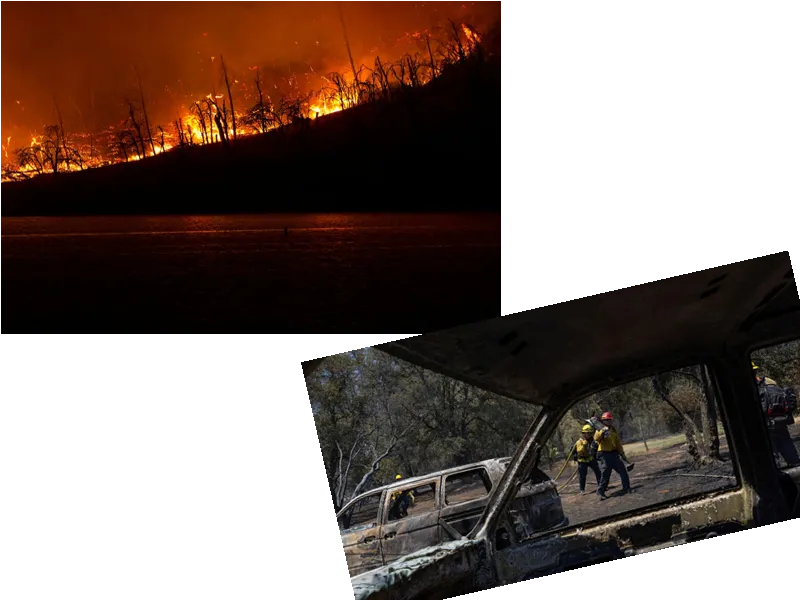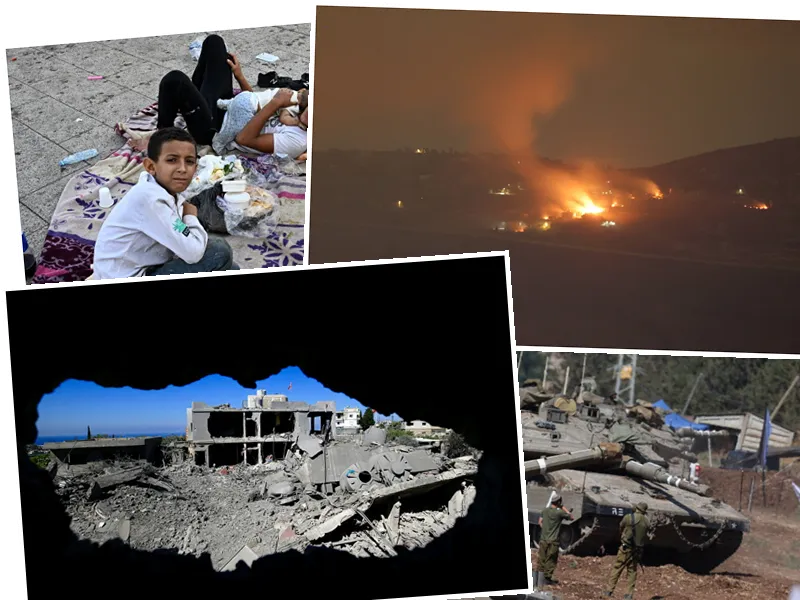Wildfires continue to devastate the western United States as temperatures soar, with the latest blaze in Butte County, northern California, forcing thousands of residents to evacuate amid an unprecedented heat wave. The Thompson Fire, which ignited in Butte County, has rapidly spread across 3,500 acres, threatening the community of Oroville, located about 65 miles north of Sacramento.
California Governor Gavin Newsom has declared a state of emergency, mobilizing additional resources including the California National Guard to combat the fire. The excessive heat, forecasted to exceed 110 degrees Fahrenheit (43°C), has made firefighting efforts more challenging by drying out vegetation and increasing the risk to firefighters and residents. More than 1,400 firefighters, eight helicopters, and other air vehicles are currently battling the blaze.
The fire has also impacted the Oroville reservoir, the largest in the United States, disrupting hydroelectric power production due to evacuations and power line de-energization. Although the fire has burned vegetation around the dam, the California Department of Water Resources (DWR) has confirmed that there is no immediate risk to the structural integrity of the dam. Precautionary measures, such as wetting potentially at-risk areas and placing standby generators at key facilities, have been implemented.
The Oroville Dam's main spillway, rebuilt after a major failure in February 2017, has been reopened to manage water releases and maintain temperature control on the Feather River. This ensures a continuous flow of water while mitigating the fire's impact. However, smoke from the fire has spread across Northern California, affecting air quality and posing health risks to residents.
The city of Oroville, which canceled its Fourth of July fireworks celebration due to fire risk, has seen major evacuations affecting about 28,000 people. Many residents are still recovering from previous disasters linked to forest fires. The recent heat wave has set temperature records across several areas of California, including Ukiah, San Jose, and the Concord, Santa Rosa, and Napa airports. More than 150 million people have received heat alerts across the western and southern United States.
The Thompson Fire is burning just a few dozen kilometers from Paradise, a town devastated by the deadliest fire in California's history in 2018, which claimed 85 lives. Local fire chief Garrett Sjolund has warned of the difficult conditions faced by the approximately 400 firefighters battling the flames, aided by planes and helicopters. The brush is dry, and any gust of wind can quickly spread the fire.
Despite recent rainy winters, the American West has experienced around 20 years of drought, with the summer of 2024 expected to be particularly hot and dry. The recent excess precipitation has led to increased vegetation, which, once dried, serves as fuel for the flames. Butte County Sheriff Kory Honea has emphasized the danger of fireworks during this period, urging residents not to engage in risky behavior.
- The Thompson Fire's rapid spread and the extreme conditions highlight the increasing frequency and severity of wildfires in California. The combination of prolonged drought, high temperatures, and dry vegetation creates a perfect storm for these devastating events.
- The impact on the Oroville reservoir underscores the broader implications of wildfires on essential infrastructure, including water and power supplies. As climate change continues to influence weather patterns, the state may need to invest in more resilient infrastructure and emergency response capabilities.
- The historical context of the Paradise fire in 2018 serves as a stark reminder of the potential human toll of these disasters. The ongoing efforts to combat the Thompson Fire reflect the dedication and bravery of firefighters and emergency personnel, who work tirelessly under dangerous conditions to protect lives and property.






